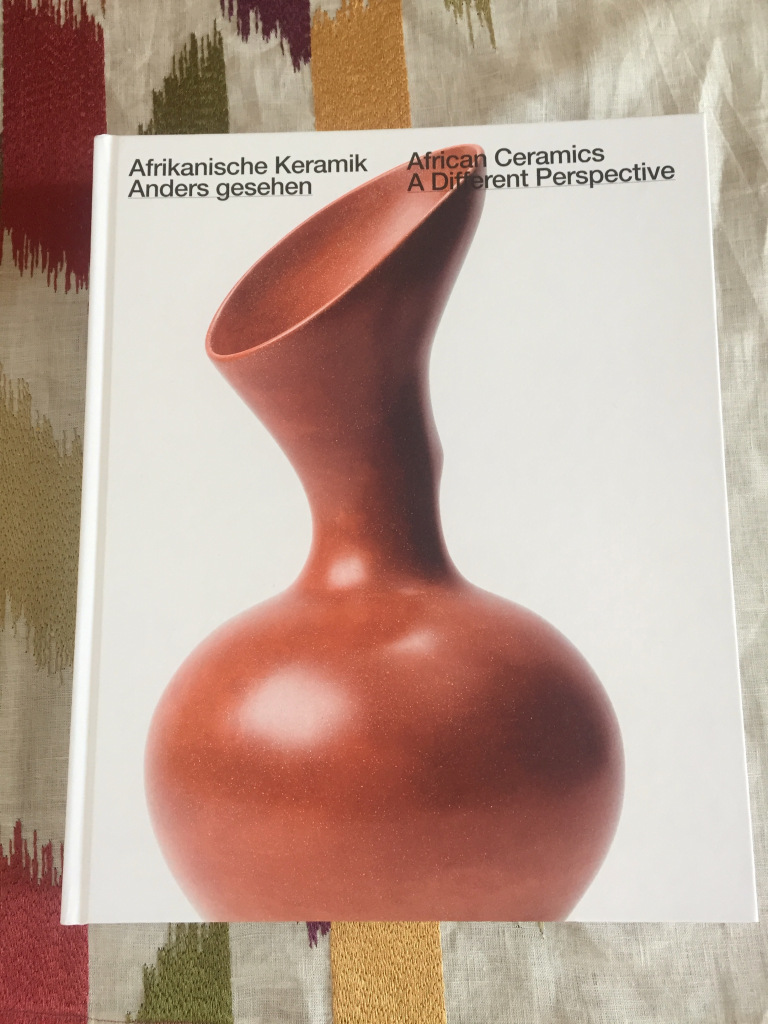Design Museum in Munich: ‘African Ceramics, aCollection of Franz, Duke of Bavaria donation and permanent loan to Die Neue Sammlung

Clive Sithole, Gefäße, 2014 (rechts) und 2015 (links), Südafrika / Zulu,
Sammlung S.K.H. Herzog Franz von Bayern. © Die Neue Sammlung (Foto. A. Laurenzo)
A warm July afternoon I attended a lovely event at the Rotunda of the Die Neue Sammlung at the Pinakothek der Moderne, as Franz Duke of Bavaria generously grants a gift from his important African ceramics collection.
“The donation and permanent loan of African ceramics form an important extension to our collection and a major addition to our non-European holdings. We are very grateful for the exceptionally generous gift,” comments Angelika Nollert, Director of Die Neue Sammlung.
“The African Ceramics collection closes the unfortunate geographical gap in the holdings with an inventory that is as outstanding in terms of quality as it is in quantity.’
Over 1,300 items of African ceramics from the collection of Franz Duke of Bavaria are going to Die Neue Sammlung.

Gefäß, 2013, Jabu Nala, Südafrika / Zulu Sammlung S.K.H. Herzog Franz von Bayern © Die Neue Sammlung (Foto. A. Laurenzo)
‘Starting in the 1960s, His Royal Highness the Duke of Bavaria has established an important collection of African ceramics. The collection comprises examples from different African regions and focuses in particular on ceramic vessels from the 19th and 20th centuries. The collection is regarded as one of the most important collections of African ceramics worldwide; highly aesthetic objects are formally very diverse and include items of everyday use as well as ritually employed vessels. The range of designs oscillates between the abstract and the figurative.‘ (Die Neue Sammlung official press news)

Voania Muba, Gefäß, Ende 19. Jh. – Anfang 20. Jh., Demokratische Republik Kongo / Woyo Sammlung S.K.H. Herzog Franz von Bayern © Die Neue Sammlung (Foto. A. Laurenzo)

Figur, 19. – 20. Jh., Togo / Ewe oder Fon (Mono Fluß?) Sammlung S.K.H. Herzog Franz von Bayern
© Die Neue Sammlung (Foto. A. Laurenzo)

Vessel, beginning of 20th century, Democratic Republic of Congo / Teke (Utyo area), Collection of Franz, Duke of Bavaria. © Die Neue Sammlung (Photo: A.Laurenzo)
My dear colleague and friend, Ashley Booth Klein, in her beautiful publication, “Obelisk” notes on ‘painting in ceramic art’…
….painting in ceramic art was being treated in two different ways in the 1950s: ceramic artists, including Voulkos, Mason, and Price, were treating painting as the end of multi-step individualized processes—to push of craft into the territory of fine art, while painters like Picasso and Joan Miro were learning craft in order to exploit ceramics as, simply, another medium employed in a broader art practice. All of these artists would continue in the 1960s to pursue and refine their different methodologies and define ceramic art as something exceeding craft to the end of the century.

Vessel, 19th – 20th century, Ghana / Ashanti, Collection of Franz, Duke of Bavaria. © Die Neue Sammlung (Photo: A.Laurenzo)
‘Ceramic art, at times functional, at times purely decorative or symbolic, in its original capacity was used to tell myths and stories. In Ancient Greece, small figurines symbolized Gods and the human form, while vessels were etched and painted with a range of pictorial narratives from funeral scenes to sea battles, to dances and boxing matches. Ceramic art was essentially a type of visual history, and much of our understanding of the ancient world and the first civilizations has been discerned by the unearthing and analysis of its worn fragments. In my eyes, the medium, throughout centuries of adaptation and reinvention, has remained and will always remain, a vestige of its primary and vital function as an embodiment and conveyor of human life and its essence.’ (Ashley Booth Klein, on Origins andPhilosophy,boothceramics,com)

installation view, Die Neue Sammlung, (rotunda, Pinakothek der Moderne), July 2018,photo©Venetia Kapernekas
A beautiful book/catalogue is published on the occasion of the exhibition (The Design Museum, Munich, authors and Verlag der Buchhandlung Watlter König), 2019 with a fantastic sculpture by Madgalene Odundo, (b.Kenya, 1950).
Josef Straßer on Madgalene Odundo writes, …”Odundo’s ceramics are distinguished by the exceptional precision of their construction, as she deliberately eliminates the slight irregularities that are characteristic of the coiling techniques. She not only very carefully smoothes the walls of her vessels, she also polishes the clay when it is as hard as leather, repeating this several times to ensure that the resulting surface is kept especially smooth….”
(photos courtesy & by permission (press office, Die Neue Sammlung, 2018)unless otherwise stated,thank you Verena Sanladerer for the photos & permission to publish
